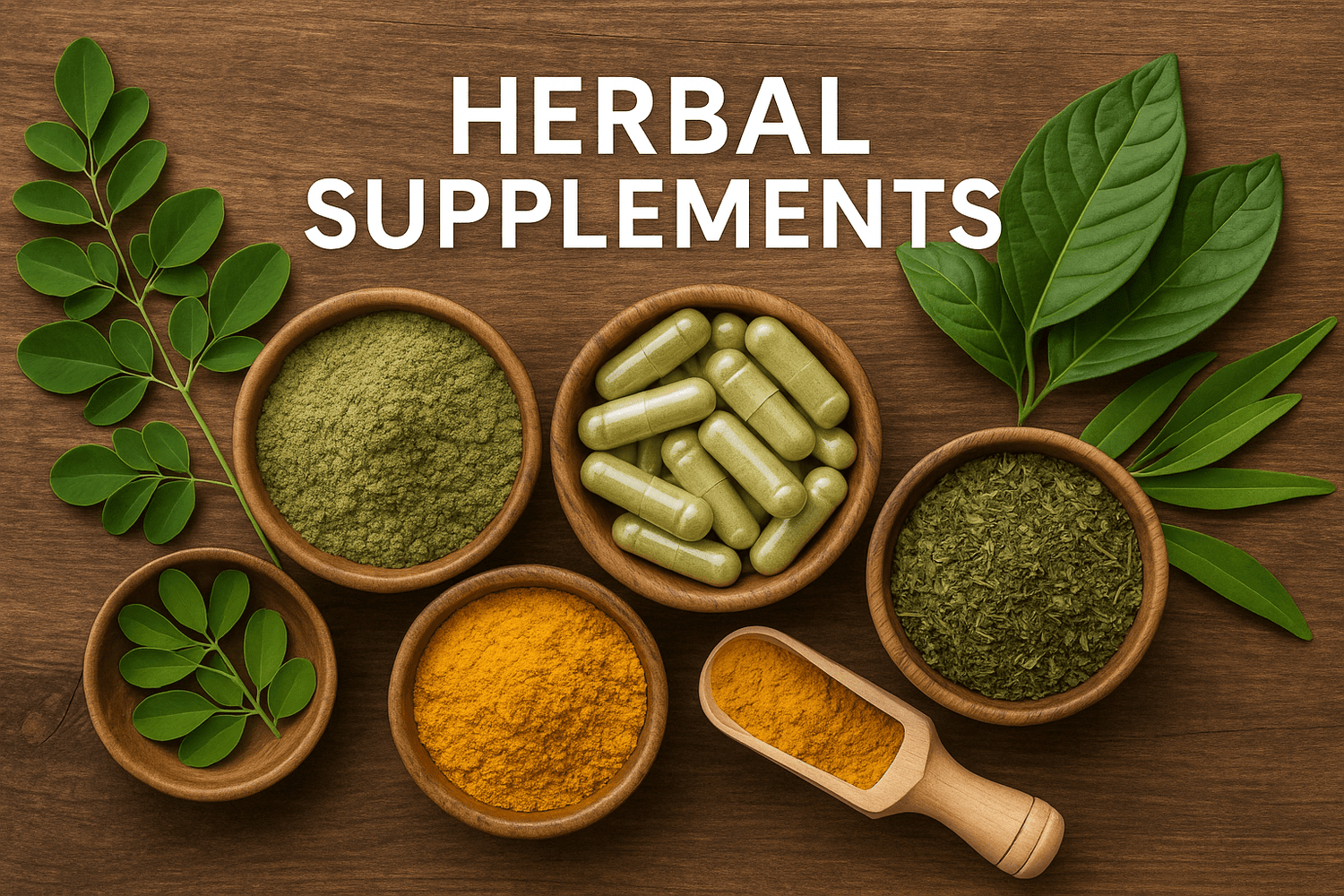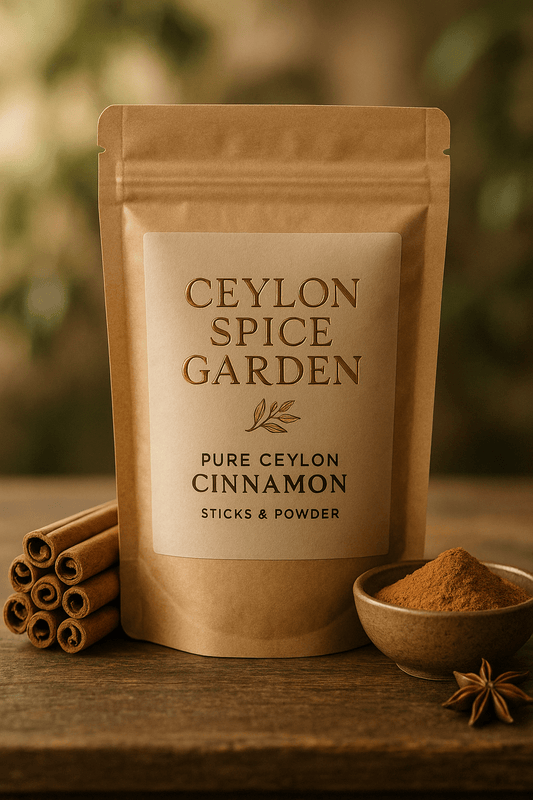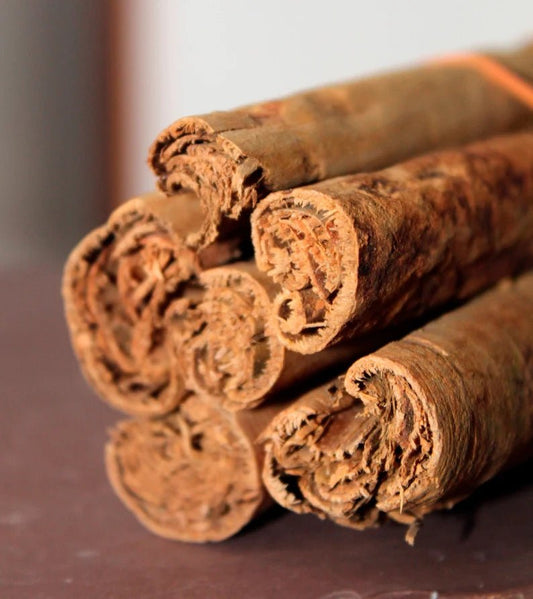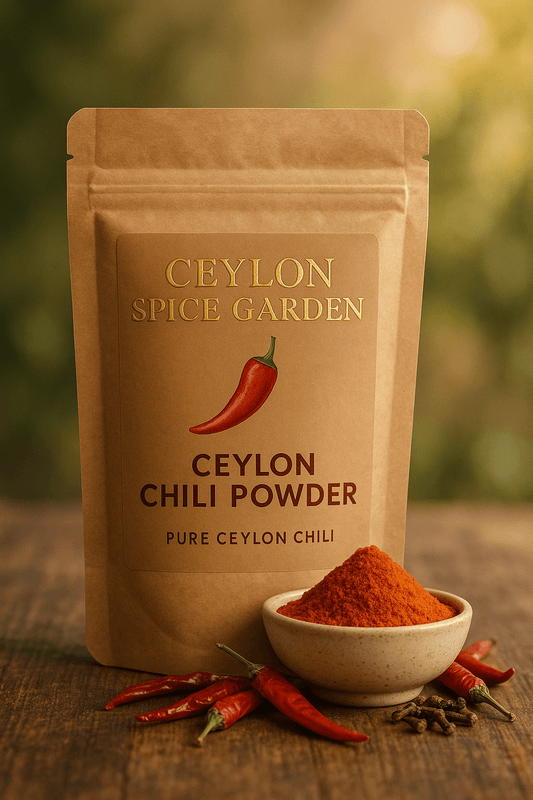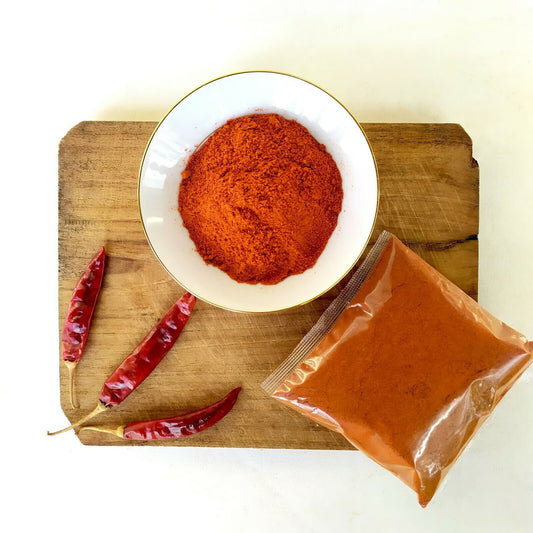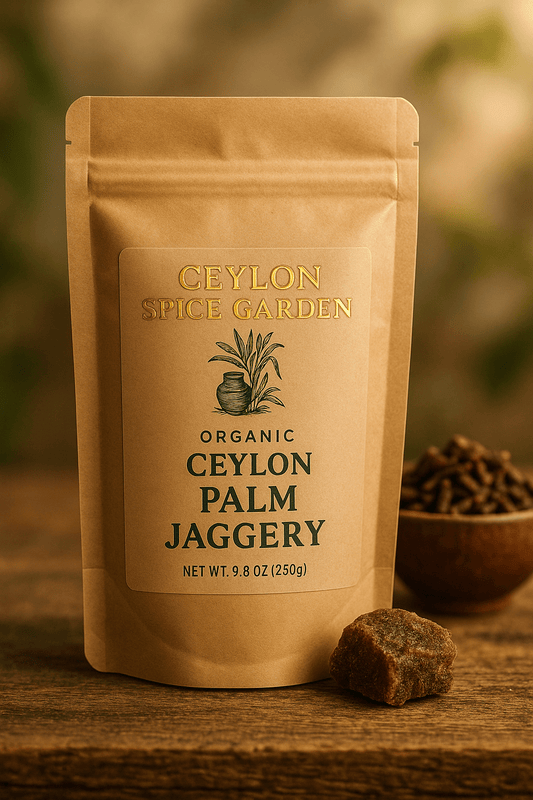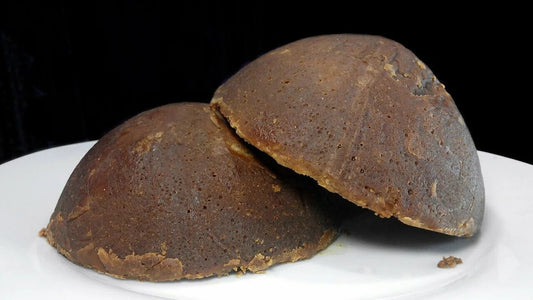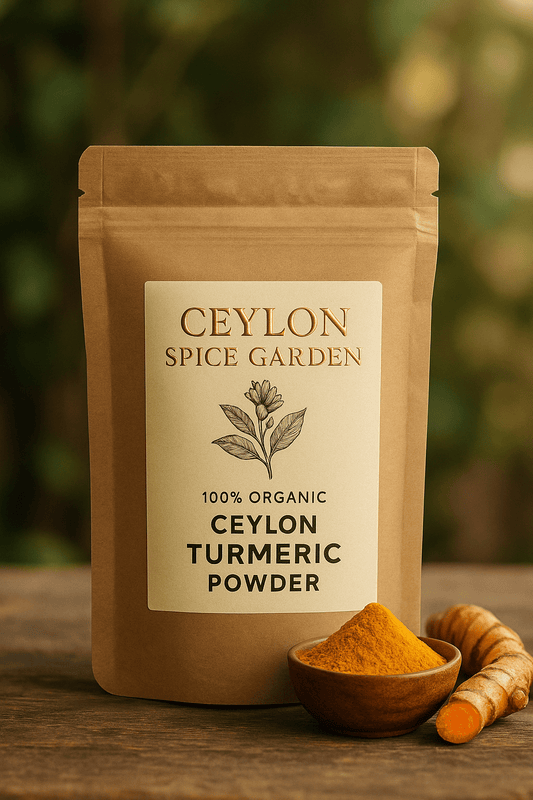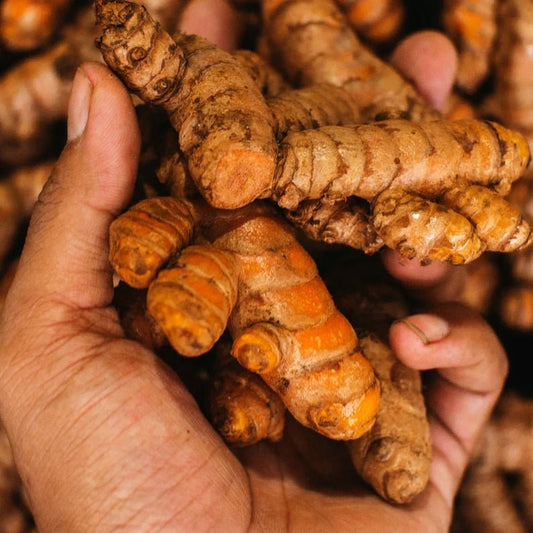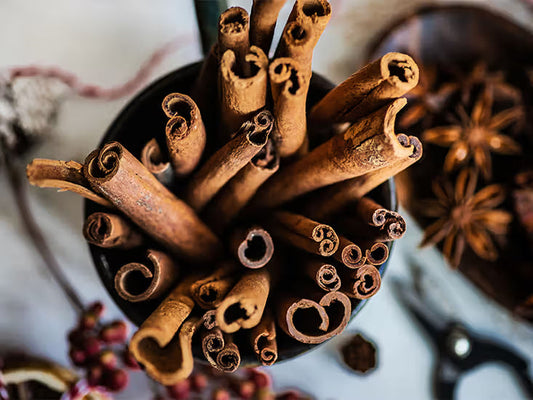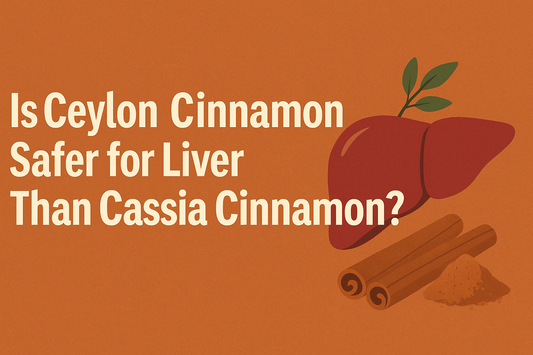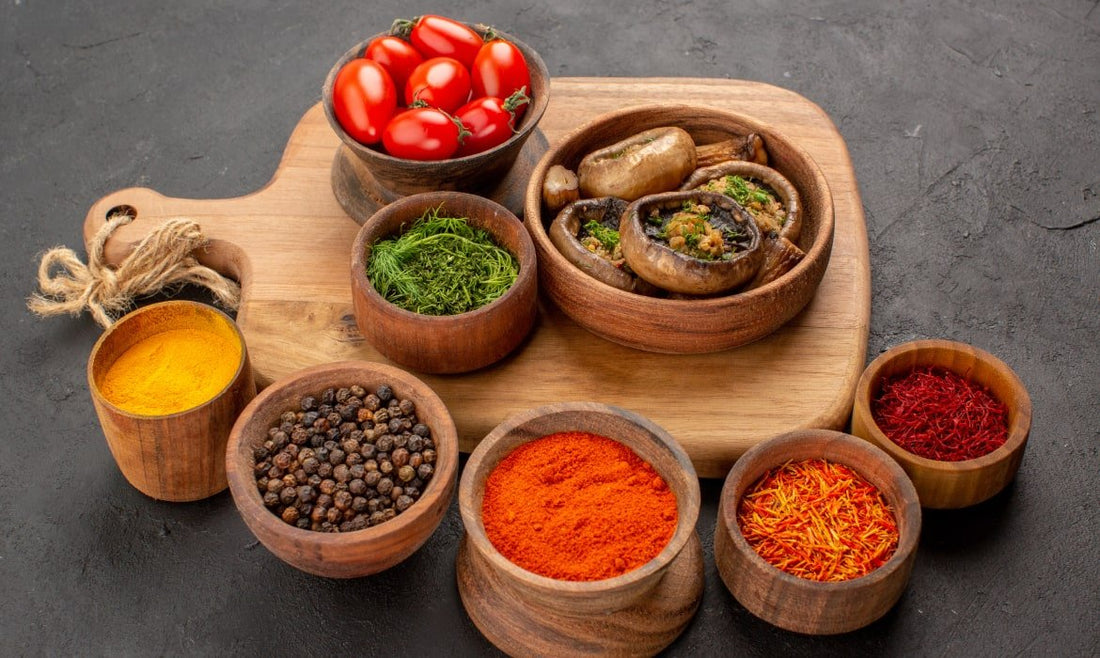
How Ceylon Spices Are Grown and Harvested: Complete Guide | Ceylon Spice Garden
How Ceylon Spices Are Grown and Harvested: From Seed to Premium Quality
Table of Contents
- Ideal Climate and Growing Conditions
- Soil Preparation and Organic Practices
- Ceylon Cinnamon: Growing and Harvesting
- Black Pepper Cultivation Methods
- Cardamom: The Delicate Process
- Growing Cloves and Nutmeg
- Sustainable Farming Practices
- Traditional Harvesting Techniques
- Post-Harvest Processing
- Quality Control and Grading
- Frequently Asked Questions
Ideal Climate and Growing Conditions
Understanding how Ceylon spices are grown and harvested begins with appreciating Sri Lanka's unique geographical advantages. The island's position between 6-10 degrees north of the equator provides the perfect tropical climate for spice cultivation, with distinct wet and dry zones creating diverse microclimates.
Ceylon's spice gardens thrive in temperatures ranging from 25-30°C (77-86°F) with high humidity levels of 70-90%. The island receives two monsoons annually – the Southwest monsoon (May to September) and the Northeast monsoon (December to February) – providing the essential rainfall patterns that different spices require at various growth stages.
The Perfect Spice-Growing Regions
The central highlands of Kandy and Matale, the southern coastal belt of Galle and Matara, and the intermediate zones have become legendary for producing specific spices. Each region's unique combination of elevation, rainfall, and soil type contributes to the distinctive flavor profiles of Ceylon spices.
Soil Preparation and Organic Practices
The foundation of how Ceylon spices are grown and harvested lies in meticulous soil preparation. Traditional farmers have passed down knowledge through generations about creating the ideal growing medium for each spice variety.
Soil Requirements by Spice Type
| Spice | Ideal Soil Type | pH Range | Key Nutrients |
|---|---|---|---|
| Ceylon Cinnamon | Well-drained sandy loam | 5.5-6.5 | Organic matter, potassium |
| Black Pepper | Rich loamy soil | 5.5-7.0 | Nitrogen, phosphorus |
| Cardamom | Forest loam with humus | 6.0-7.0 | Organic carbon, nitrogen |
| Cloves | Deep, fertile loam | 6.0-7.0 | Calcium, magnesium |
| Nutmeg | Deep, well-drained clay loam | 6.0-7.0 | Potassium, zinc |
Modern Ceylon spice farmers increasingly embrace organic practices, using traditional composting methods with cow dung, decomposed leaves, and coconut coir. This approach not only maintains soil fertility but also ensures the purity and quality that Ceylon spices are renowned for globally.
Experience Pure Quality: Discover our organically grown spices at Ceylon Spice Garden, where traditional farming meets modern quality standards.
Ceylon Cinnamon: Growing and Harvesting
Ceylon cinnamon (Cinnamomum verum) cultivation represents the pinnacle of how Ceylon spices are grown and harvested. This process requires patience, skill, and generations of knowledge to produce the delicate, sweet cinnamon that commands premium prices worldwide.
Propagation and Planting
Cinnamon cultivation begins with selecting healthy mother plants for seed collection or vegetative propagation. Seeds are planted in shaded nurseries and carefully tended for 12-18 months before transplanting. The young plants are spaced 2-3 meters apart in the main field, allowing adequate room for growth and air circulation.
Year 1-2: Establishment Phase
Young cinnamon plants establish their root system. Regular weeding and organic mulching maintain optimal growing conditions.
Year 3: First Harvest
The first harvest involves cutting the main stem at ground level, promoting the growth of multiple shoots from the base.
Year 4+: Regular Harvesting
Mature shoots are harvested twice yearly, during the rainy seasons when the bark peels easily from the wood.
The Art of Cinnamon Peeling
The harvesting of Ceylon cinnamon is an art form passed down through families. Skilled peelers use specialized knives to make precise cuts in the bark, then carefully separate it from the wood. The outer bark is scraped away, leaving only the delicate inner bark that forms the famous cinnamon quills.
Traditional Peeling Process:
- Harvest shoots during early morning when moisture content is ideal
- Make longitudinal cuts along the length of the shoot
- Carefully peel bark in large sections
- Remove rough outer bark using curved knives
- Layer thin inner bark pieces to form quills
- Dry in shade for 4-5 days until golden brown
Black Pepper Cultivation Methods
Understanding how Ceylon spices are grown and harvested includes mastering the vertical farming techniques used for black pepper (Piper nigrum). Known as the "King of Spices," Ceylon pepper requires specific support systems and careful attention throughout its growth cycle.
Support Systems and Planting
Black pepper vines require sturdy support, traditionally provided by living trees like coconut palms or specially planted support posts. Farmers plant pepper cuttings at the base of these supports during the monsoon season, ensuring adequate moisture for establishment.
The vines are trained to climb vertically, with lateral branches pruned to concentrate energy on fruit production. This vertical growing method maximizes land use and facilitates easier harvesting.
Flowering and Fruit Development
Pepper vines begin flowering in their third year, with small white flowers appearing on hanging spikes. These develop into green peppercorns over 6-8 months. The timing of harvest is crucial – peppercorns must be picked when one or two berries on the spike begin turning red, indicating optimal maturity.
Creating Different Pepper Types
From the same plant, Ceylon farmers produce black, white, and green pepper through different processing methods. Black pepper is created by drying green peppercorns in the sun, white pepper by removing the outer skin of ripe berries, and green pepper by preserving fresh peppercorns in brine.
Cardamom: The Delicate Process
Cardamom cultivation showcases the intricate nature of how Ceylon spices are grown and harvested. This "Queen of Spices" demands specific shade conditions and careful attention to maintain its delicate flavor profile.
Shade Management
Ceylon cardamom thrives under 60-70% shade, typically provided by a canopy of native trees. This forest-like environment maintains the cool, humid conditions cardamom requires while protecting the plants from direct sunlight that can damage the delicate leaves and reduce essential oil content.
Harvesting Green Gold
Cardamom harvesting is labor-intensive, requiring multiple picks throughout the season as pods mature at different rates. Harvesters must identify pods at the perfect stage – fully developed but still green – to ensure maximum flavor and aroma.
Taste the Difference: Experience our hand-picked cardamom and other premium spices in our specialty spice collection.
Growing Cloves and Nutmeg
While not originally native to Ceylon, cloves and nutmeg have been successfully cultivated on the island for centuries, adapting to local conditions and developing unique flavor profiles.
Clove Cultivation
Clove trees (Syzygium aromaticum) require 7-8 years before producing their first harvest. The flower buds must be picked at exactly the right moment – when they turn from green to pink but before the flowers open. This narrow harvesting window requires experienced pickers who can quickly identify ready buds.
Nutmeg: Two Spices in One
Nutmeg trees are unique in producing two distinct spices – nutmeg and mace. The trees are dioecious, requiring both male and female plants for fruit production. After 7-9 years, female trees produce fruits that split to reveal the bright red mace surrounding the nutmeg seed.
| Growth Stage | Timeframe | Key Activities |
|---|---|---|
| Seedling Stage | 0-2 years | Nursery care, shade management |
| Juvenile Stage | 2-7 years | Pruning, fertilizing, sex determination |
| Productive Stage | 7+ years | Harvesting, processing, quality control |
Sustainable Farming Practices
Modern understanding of how Ceylon spices are grown and harvested increasingly emphasizes sustainability. Traditional methods naturally aligned with ecological principles, and today's farmers build upon this foundation with enhanced conservation practices.
Intercropping and Biodiversity
Ceylon spice gardens often feature multiple crops growing together – pepper vines climbing coconut palms, cardamom thriving under cinnamon shade, and vanilla orchids adorning support trees. This polyculture approach maximizes land use while maintaining ecological balance.
Water Conservation
Traditional irrigation methods like cascade systems and rainwater harvesting ensure efficient water use. Modern farmers combine these with drip irrigation and mulching to maintain optimal soil moisture while conserving water resources.
Sustainable Practices Include:
- Composting all agricultural waste
- Using natural pest control methods
- Maintaining buffer zones of native vegetation
- Practicing crop rotation where applicable
- Preserving traditional seed varieties
Traditional Harvesting Techniques
The methods of how Ceylon spices are grown and harvested have been refined over centuries, with each spice requiring specific techniques to preserve quality and maximize yield.
Timing Is Everything
Experienced farmers read subtle signs – the color of pepper berries, the aroma of cinnamon bark, the plumpness of cardamom pods – to determine the perfect harvest moment. This traditional knowledge, combined with modern understanding of essential oil development, ensures optimal quality.
Hand Harvesting Excellence
Despite technological advances, hand harvesting remains the gold standard for Ceylon spices. This method allows for selective picking, ensuring only properly matured spices are collected while leaving others to ripen fully.
Post-Harvest Processing
The journey of how Ceylon spices are grown and harvested continues well beyond picking. Post-harvest processing is crucial for developing the characteristic flavors and ensuring long shelf life.
Drying Techniques
| Spice | Drying Method | Duration | Quality Indicators |
|---|---|---|---|
| Cinnamon | Shade drying | 4-5 days | Golden brown color, tight quills |
| Black Pepper | Sun drying | 7-10 days | Wrinkled, dark brown/black |
| Cardamom | Special drying chambers | 18-24 hours | Green color retained, dry husk |
| Cloves | Sun drying | 4-5 days | Dark brown, oil visible when pressed |
| Nutmeg | Gradual drying | 6-8 weeks | Kernel rattles inside shell |
Essential Oil Preservation
Proper processing preserves the volatile oils that give Ceylon spices their distinctive flavors. Temperature control, humidity management, and careful handling prevent oil loss and maintain the quality that makes Ceylon spices world-renowned.
Quality Control and Grading
The final stage in understanding how Ceylon spices are grown and harvested involves rigorous quality control. Ceylon maintains strict standards that have established its reputation for premium spices.
Grading Systems
Each spice has specific grading criteria based on size, color, oil content, and absence of defects. For example, Ceylon cinnamon grades range from Alba (the finest) to Continental (standard quality), with each grade commanding different market prices.
Quality Assurance Measures
- Visual inspection for color and uniformity
- Moisture content testing
- Essential oil analysis
- Microbiological testing
- Pesticide residue screening
- Packaging in moisture-proof materials
From Garden to Global Markets
Understanding how Ceylon spices are grown and harvested reveals a complex interplay of traditional knowledge, ideal natural conditions, and meticulous attention to detail. From the careful selection of planting sites to the precise timing of harvests and the artful processing methods, every step contributes to the exceptional quality that has made Ceylon spices legendary worldwide. This combination of ancient wisdom and modern sustainable practices ensures that Ceylon continues to produce the world's finest spices while preserving the environment for future generations.
Frequently Asked Questions
Ceylon cinnamon can be harvested for the first time after 3 years of growth. The initial harvest involves cutting the main stem to encourage multiple shoot development. From the fourth year onwards, farmers can harvest shoots twice yearly during the rainy seasons. A well-maintained cinnamon plant can continue producing quality bark for 40-50 years with proper care and management.
Ceylon spices are distinguished by several factors: the island's unique terroir combining tropical climate with diverse microclimates, traditional cultivation methods passed down through generations, hand-harvesting techniques that ensure optimal maturity, and strict quality control standards. For example, true Ceylon cinnamon has a sweeter, more delicate flavor than cassia, while Ceylon pepper is known for its complex, robust taste with higher piperine content.
Many Ceylon spice gardens use traditional organic farming methods that have been practiced for centuries. These include natural composting, biological pest control, intercropping for biodiversity, and avoiding synthetic chemicals. While not all farms are certified organic, the traditional cultivation methods naturally align with organic principles. Many farmers are now pursuing formal organic certification to meet growing international demand for organic spices.
Experienced farmers use various indicators specific to each spice: for cinnamon, the bark should slip easily from the wood during rainy seasons; pepper berries are ready when one or two on a spike turn red; cardamom pods should be fully formed but still green; cloves must be picked when buds are pink but haven't opened; and nutmeg fruits split naturally to reveal the mace. This traditional knowledge is often supplemented with modern techniques like measuring essential oil content.
Climate is crucial in determining how Ceylon spices are grown and harvested. The island's position near the equator provides consistent temperatures (25-30°C) ideal for tropical spices. Two distinct monsoon seasons provide necessary rainfall at different times, supporting various growth stages. Different elevations create microclimates – low country heat suits pepper and cinnamon, while cooler highlands are perfect for cardamom. This climatic diversity allows Ceylon to grow a wide variety of high-quality spices.
Ceylon spice farming has historically been highly sustainable, with traditional practices including polyculture systems, natural shade management, organic composting, and minimal chemical inputs. Modern farmers build on these foundations by implementing water conservation techniques, maintaining biodiversity through intercropping, preserving native forest buffers, and using renewable energy for processing. Many farms are carbon-neutral or carbon-negative due to the extensive tree cover required for shade-loving spices.
